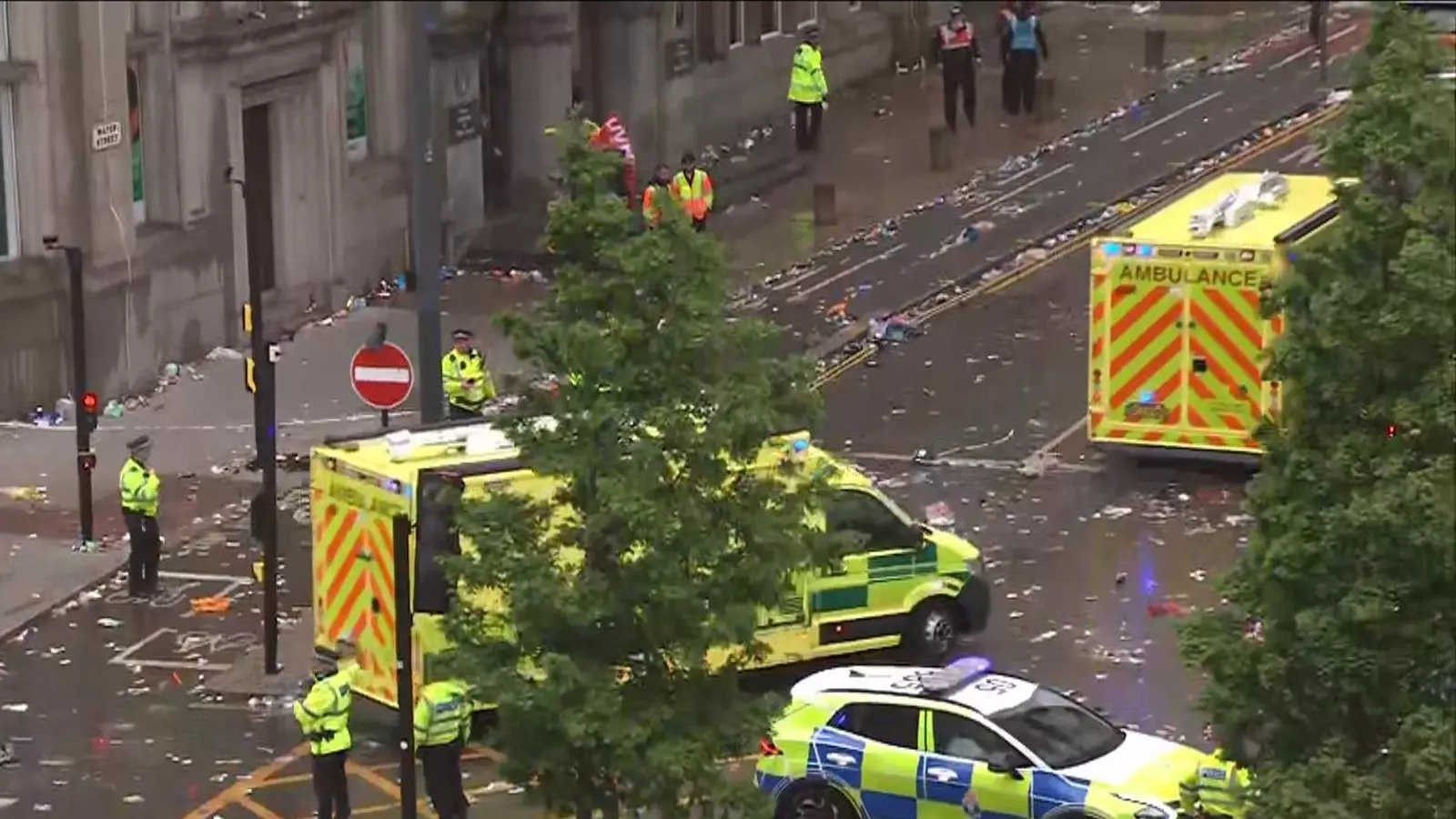On what should have been an exciting day of triumph and revelry for Liverpool Football Club and its passionate supporters, a horrifying incident unraveled the jubilant atmosphere of the Premier League victory parade. Thousands gathered on the streets, adorned in the club’s colors and celebrating a long-desired championship, only to have their joy abruptly transformed into chaos and fear. Such an event, where the unthinkable becomes reality, starkly highlights the fragility of public safety and the need for urgent reassessment regarding event management in such high-stakes situations.
Eyewitness accounts tell stories of sheer panic, confusion, and unimaginable terror. A vehicle, seemingly bursting with hostility, collided with celebrants in such a reckless manner that it seemed premeditated. The terrifying noise of screams filled the air, engulfing spectators who had arrived to cheer their team, only to be subjected to a nightmare. Natasha Rinaldi, observing from a window, described the chilling soundscape of distress that unfolded before her; a situation nobody had anticipated. Events like these, rooted in hostility or carelessness, tamper with the very essence of community celebrations.
The Human Cost of Negligence
Reports from those directly affected shed light on the harrowing details of the incident. Harry Rashid, who stood a mere 10 feet away from the impact, voiced how a once vibrant celebration morphed into a scene reminiscent of a horror film. His chilling observations—of the car accelerating and injuring attendees—together with his daughter’s screams, underline the profound psychosocial trauma inflicted on families and the broader community. This haunting day won’t just be remembered for a victory; it will now also resonate with a narrative of panic and pain.
The absence of immediate details regarding injuries is alarming. The vague nature of reports typically signals something more sinister may have transpired. In a situation that escalated so violently, the prioritization of accurate information dissemination by authorities is crucial. Seemingly, the police and emergency services responded quickly, yet a lack of clarity about the number of injured raises concerns over the management of the crisis.
A Community Shaken to Its Core
As we speculate on the predisposition of such an attack, the broader societal implications also come into focus. The horror seen during the Liverpool parade is an acute reminder of how violence, whether intentional or not, can penetrate even the most celebratory of spaces. The sentiments expressed by public figures, such as Prime Minister Keir Starmer and local MPs, highlight a collective distress and empathy for the victims and their families. Nonetheless, this outpouring of support, while essential, must translate into meaningful actions that promote safety and prevent the recurrence of such dreadful incidents.
Moreover, these tributes can’t overshadow the pressing necessity for communities to alter their approach toward public safety during large events. What should be proactive planning becomes reactive scrambling when homespun celebration turns into disaster. This incident underscores the pivotal role that local governments and security forces play in mitigating risks—an effective strategy is paramount to ensure that happiness doesn’t devolve into horror.
The Collective Responsibility Ahead
We must actively scrutinize our existing protocols for public gatherings. Lessons learned from this tragic day—an emblematic manifestation of how quickly joy can morph into fear—should propel local leaders and guardians of public welfare to address the darker undercurrents that haunt our celebrations. Society should aspire to cultivate environments where communal joy is not so easily tarnished by acts of violence or negligence.
Emphasizing the need for change, let this incident serve as a rallying cry for an overhaul in how we manage crowds and public safety. While the devastation cannot be undone, our collective response moving forward will shape the fundamental fabric of our communities and public events. We owe it to the victims, the community, and ourselves to ensure that such celebratory moments remain free from the shadow of impending doom, allowing for genuine collective joy unfettered by the threat of violence.


Leave a Reply